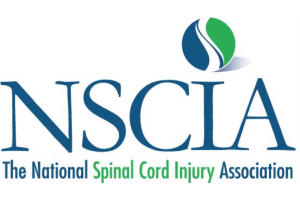Drowsy Driving
The Dangers of Drowsy Driving and the Role of
Driver Fatigue in Causing Motor Vehicle Accidents
Increasing attention is now being paid to the problem of “Drowsy Driving” and the significant role it plays in causing motor vehicle accidents. Numerous studies have shown that fatigue and/or sleepiness significantly impairs a person’s ability to safely operate a motor vehicle. Drowsy drivers have slowed reaction times, impaired judgment, diminished motor skills, more difficulty with information processing, and a tendency toward more aggressive driving behaviors. One study performed by the AAA Foundation for Traffic Safety concluded that compared to drivers who had gotten 8 hours or more of sleep, people who had slept less than 7 hours are twice as likely to cause a motor vehicle accident, and people sleeping less than 5 hours increased the risk of a crash four to five times. Researchers in Australia claim that being awake for 18 hours produced an impairment equal to a blood alcohol concentration (BAC) of .05, and sleep deprivation of 24 hours produced impairment equivalent to that of a drunk driver with a BAC of .10 which is above the legal limit of .08 in Georgia and all across America. According to a major study conducted by NHTSA and the Virginia Tech Transportation Institute in 2006, nearly 80% of all automobile crashes involve some form of driver inattention within 3 seconds before the event. The study concluded that the primary causes of such “inattention” just before impact were drowsiness or distracting activities such as cell phone use. At an April 2006 news conference releasing the results of this landmark research, a representative from NHTSA said, “This important research illustrates the potentially dire consequences that can occur while driving distracted or drowsy. It’s crucial that drivers always be alert when on the road.”
Deaths and Injuries Due to Drowsy Driving
Fatal car wrecks are the tragic consequence of driver impairment due to fatigue or sleepiness. Government statistics provided annually by the National Highway Traffic Safety Administration (NHTSA) indicate that driver fatigue causes approximately 100,000 police reported automobile crashes in which 1,550 people are killed and 71,000 more are injured each year. However, many experts believe these statistics grossly understate the relative contribution driver fatigue makes to the cause of many traffic accidents. Most police officers are not adequately trained to detect or identify sleep related crashes. Even where police are able to identify driver fatigue or drowsiness as a crash factor, the reporting practices in each state are inconsistent with some states not even having codes for the reporting of these causes on official police reports. Thus, many crashes caused by driver fatigue, drowsy driving or incidents of drivers who fall asleep at the wheel are never detected or officially reported as such. Indeed, many safety advocates in this country have described driver fatigue and drowsy driving as being the most “under-estimated and under-reported” traffic safety problem facing the motoring public. In Australia and many European countries where the reported data is considered more reliable, drowsy driving is consistently blamed for 10-30% of all automobile accidents.
Drowsy Driving is a Widespread Safety Concern
There is ample reason to believe that driver fatigue or sleepiness is no less a contributing factor in causing fatal car accidents in this country. This is especially true given surveys which show how prevalent drowsy driving is in the United States. According to a survey conducted by NSF in 2005, 60% of all adult drivers admitted that they had driven a vehicle while feeling drowsy in the last year, 37% had actually fallen asleep at the wheel, and 4% had actually caused an accident because they fell asleep or were too tired to drive. In a 2001 NSF survey of adults who drive to work, 27% of the respondents said they had driven drowsy to or from work at least a few days every month.
Preventing Drowsy Driving
Drowsy driving is preventable. There are warning signs which every driver should look for to assess whether they are at greater risk of causing an accident. If the following warning signs appear, consider not continuing to drive or taking steps to address the situation: head nodding, frequent yawning, heavy eyelids and/or increased eye blinking, varying vehicle speeds for no reason, difficulty with concentration, weaving and/or allowing one’s vehicle to wander over road lines, and feeling restless or irritable.
It is particularly important that drivers be extremely vigilant when they are most at risk for falling asleep or having their driving skills impaired by fatigue or drowsiness. The known risk factors for drowsy driving include persons suffering sleep apnea or other sleep disorders, insomnia or inadequate sleep before driving, long periods of driving particularly where there are few breaks, driving during the night or early morning hours when the driver usually would be asleep, driving after long periods of work, use of any amount of alcohol, and use of any sedatives or medications which cause drowsiness. All of these risk factors should be avoided in order to prevent or at least reduce the chances of a crash due to fatigue or sleepiness.
Drowsy Driving Creates Civil Liability Under Georgia Law
Drivers who cause car accidents because of unsafe driving due to drowsiness or fatigue are liable for damages suffered by innocent victims. Under Georgia law, passengers or other motorists who are injured (or their family members in the case of a fatality) can hold drowsy drivers liable for civil damages in personal injury and wrongful death lawsuits. In addition, some victims have successfully asserted claims against employers who required unreasonably long hours of work and then allowed a fatigued employed to drive notwithstanding the obvious dangers associated with that exhausted employee being allowed to get behind the wheel of a motor vehicle. There are two published appellate decisions from West Virginia and Oregon which support the idea of employer liability where the employer is responsible for ignoring the obvious risks of drowsy driving which the employer’s work requirements created. These two decisions are Faverty v. McDonald’s Restaurants of Oregon, Inc., 892 P.2d 703 (Or.App. 1995) and Robertson v. LeMaster, 301 S.E.2d 563 (W.Va. 1983).
Contact an Experienced Georgia Car Accident Lawyer
The attorneys at Ragland Law Firm, LLC have considerable experience with personal injury and wrongful death claims and lawsuits involving auto and motorcycle accidents. Contact the firm if you have been injured in an automobile collision or you believe that you or a family member have been the victim of a drowsy driving crash.









